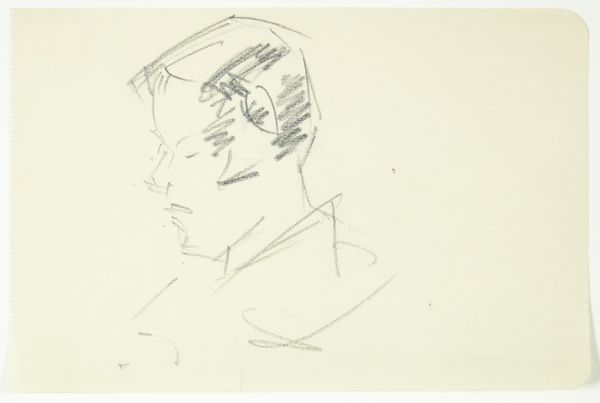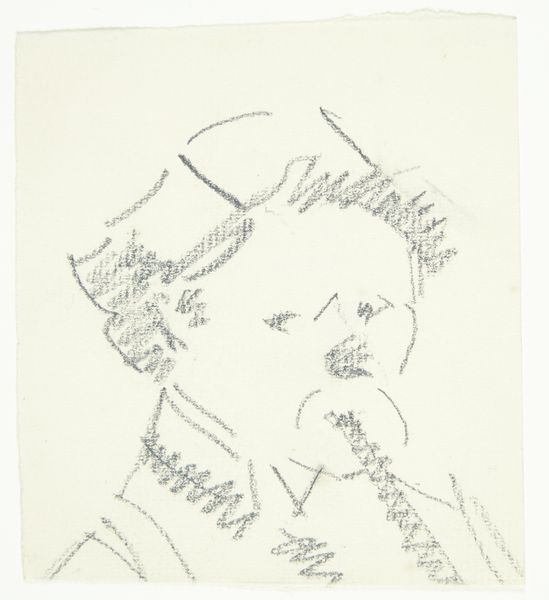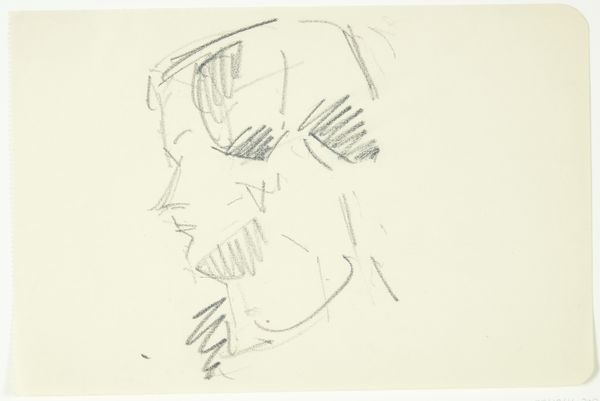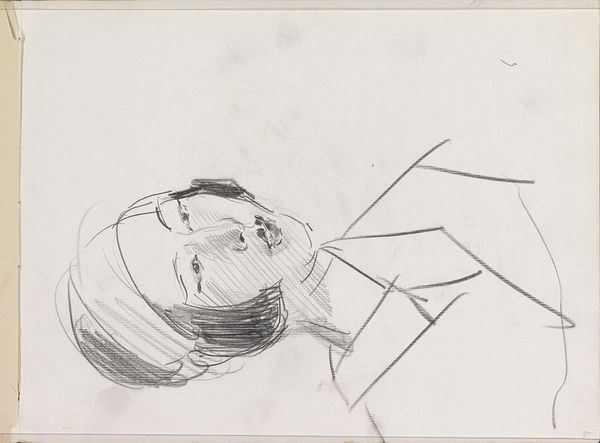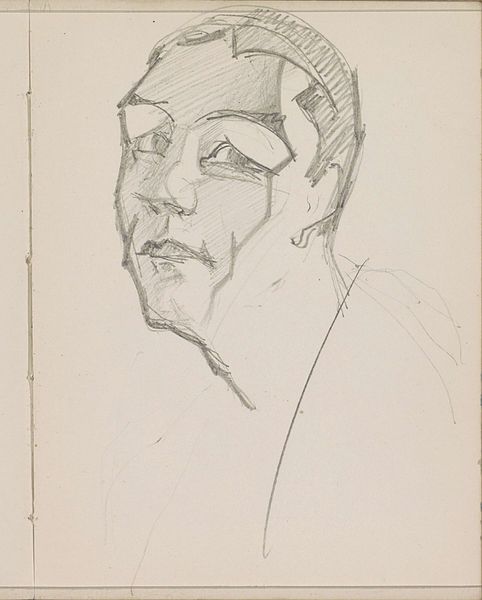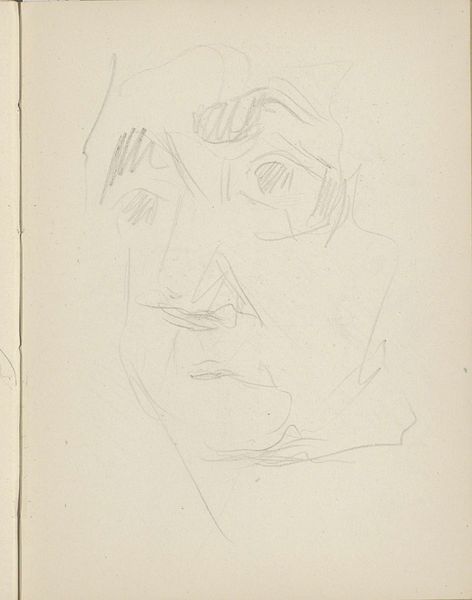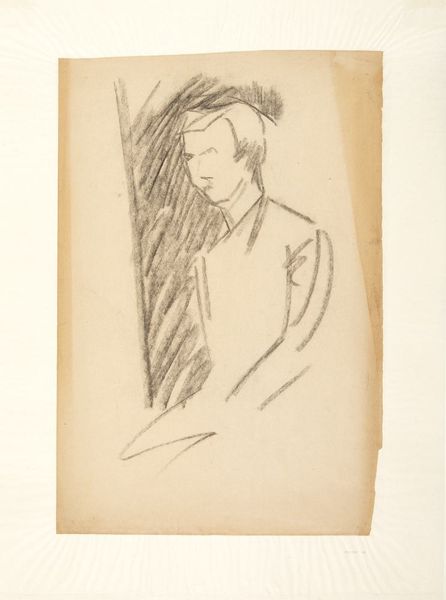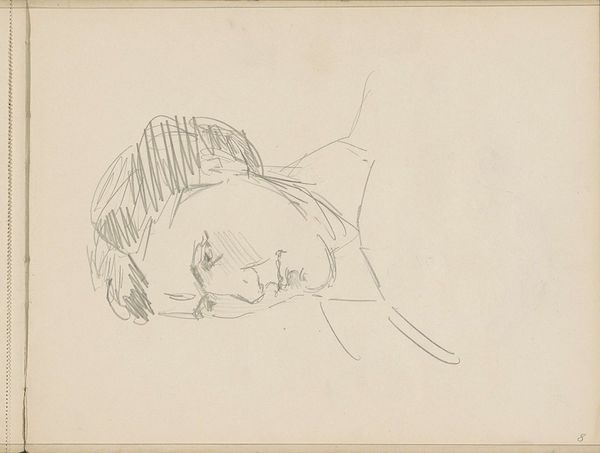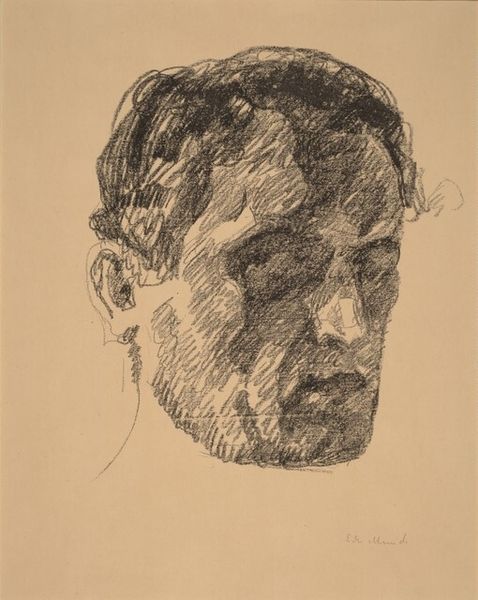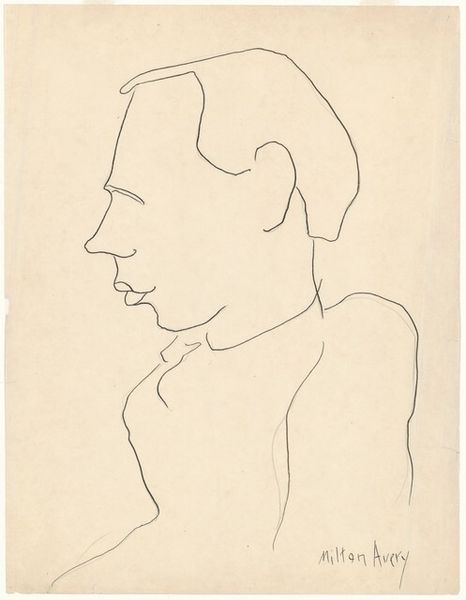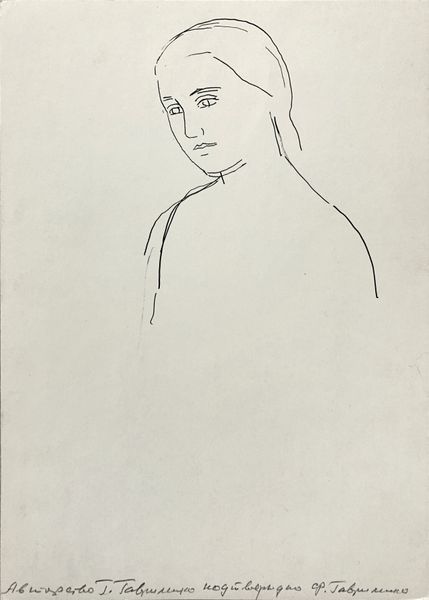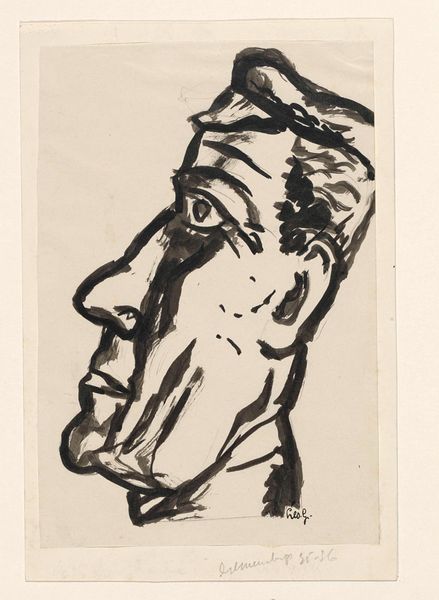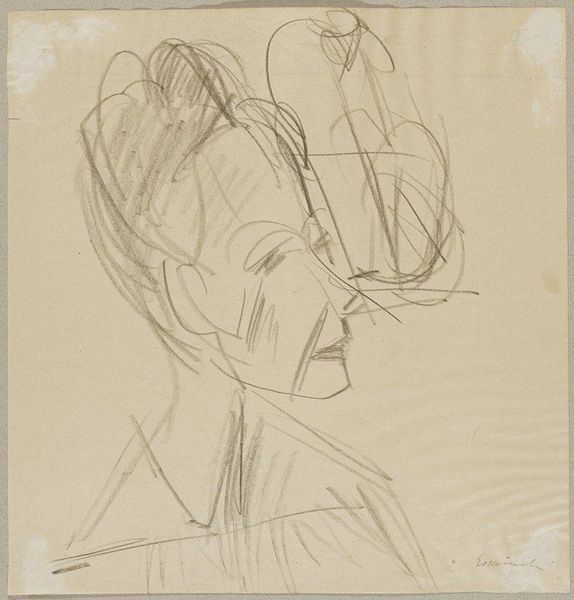
Portrætstudie af malerinden Ellen Olrik, med bøjet hoved, 7/8-profil mod venstre 1926 - 1930
0:00
0:00
drawing, pencil, graphite
#
portrait
#
drawing
#
pencil
#
graphite
Dimensions: 138 mm (height) x 210 mm (width) (bladmaal)
Curator: Looking at this delicate sketch, there’s an undeniable sense of melancholy, don’t you think? The lines are so faint, almost ephemeral. Editor: Indeed. We have here a portrait study by Edvard Weie, titled “Portrait study of the painter Ellen Olrik, with bowed head, 7/8-profile to the left,” created sometime between 1926 and 1930. The piece is rendered in graphite and pencil. It's part of the collection at the SMK – Statens Museum for Kunst. Curator: I’m drawn to the economy of line, the way Weie captures a likeness with such minimal strokes. Observe how the artist directs our gaze down towards the inclined face using these simple yet powerfully evocative linear trajectories. It’s almost as if he is drawing out her sadness onto the page through those angled forms. Editor: The piece’s significance isn't merely stylistic. Olrik, an artist herself, provides an interesting parallel. The male gaze captured in portraiture, so dominant historically, is inverted here. A male artist depicting a female artist—what narrative does that dynamic contribute to artistic exchanges in early 20th century Denmark? Weie was likely part of Olrik's circle and this image is possibly an exercise to better understand his peer's own internal reflections, something made complex through the male gaze. Curator: It’s a fascinating power dynamic you pinpoint there, certainly. What speaks to me is the work's quiet confidence; there is absolutely no surplus detail or affectation present. Each stroke delivers something. It presents a complex distillation into its barest elements; and thus, presents something true. Editor: What does strike me in connection with its formalism is the date of creation. Weie made it in a tumultuous period for visual artists generally, just on the precipice of world historical events. I wonder, then, whether these simplified forms don't represent, in fact, a searching of his own. Where does his subjectivity lie? How to better convey inner-reflection at such a crucial flashpoint? Curator: It leaves one wondering about Olrik herself; what circumstances caused her to strike such a demure pose, at this important crossroads between worlds as you state. I agree; I also feel the sketch itself acts as something quietly searching in itself as well as what it is portraying. Editor: Perhaps, a shared meditation then. These small drawings allow for larger narratives to present themselves in complex cultural, historic contexts.
Comments
No comments
Be the first to comment and join the conversation on the ultimate creative platform.
